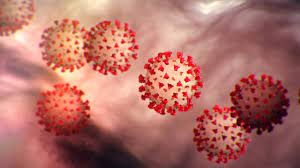How do we get all these different flu variants? Well, it’s interesting.
Unlike most viruses, the flu has a segmented RNA genome. Flu A and B have 8 segments, and Flu C has 7. Flu A is what we usually worry about.
Flu As can intermingle with other Flu As, but can’t cross with a Flu B or Flu C.
You’ve heard of the H and N. The H (which stands for hemagglutinin) is always on segment 4 and the N (which stands for neuraminidase) is on segment 6. There are 16 different varieties of H, and 9 different varieties of N. These varieties have slightly different shapes because of small changes in the order of amino acids. These proteins are expressed on the outside of the virions (the infectious virus particles that move from cell to cell), and it is largely these that determine our immune response because proteins (and our immune systems) largely work on the basis of these shapes.
Okay, lets go back to the 8 segments of RNA in a flu virus. These are analogous to human chromosomes, because each one expresses a different protein that is important for the virus to be viable. So a viable flu A virus needs one each of segment 1, 2, 3 … all the way to 8. This is just like a human who has 23 diploid chromosomes. If we had three copies of chromosome 1 and zero copies of chromosomes 2 and 3, we couldn’t survive.
When some critter catches two different strains of flu A at the same time, the 8 RNA pieces from each get mixed up inside the infected cells so when they finally end up in a virion, you’ll have some that have a different segment 4 or 6 than when they started. That’s how we get all these different flu strains. (Each virion ends up with a 1,2,3 …8, but they will be *different* ones than they had before.)
Although there are 16 H and 9 N possibilities, since there are only 8 segments of RNA, and the H is always on segment 4 and the N is always encoded on segment 6, in practice, in most cases, all 16 & 9 are unlikely. What is most likely, because an animal (usually a pig) or a human can be infected with two flu viruses at once is that what will be going around NEXT year is some combination of the strains that were going around THIS year.
So if this year the dominant strains were H1N1 and H2N2, then next year the most likely possibilities are H1N1, H1N2, H2N1 and H2N2.
And that is why the flu vax also covers more than just one specific type — because of the way this works.
I gave a simple example for explanation, but at any given time there are usually ~4 variants going around. So it gets complicated. But usually in any given country it is ~2. But with international travel and stuff, often they get it wrong and the vax is useless.
So next year’s flu is some admixture of the strains from this year. Genomic surveillance of flu strains is done, and usually they use the ones that were dominant in the area, and calculate the various combinations of those, to make the flu vax.
So anyway, this is how the flu changes every year, and how they try to guess what strains will be around next year.
Its also why at a genetic level for things like PCR, the flu and covid will never be mistaken for each other. Covid has a single RNA that is positive sense, and the flu has 8 separate negative sense RNA strands.
Here, positive sense means it encodes in the same direction as mRNA, and negative sense means it encodes in the opposite direction. This makes them very different enzymatically.
